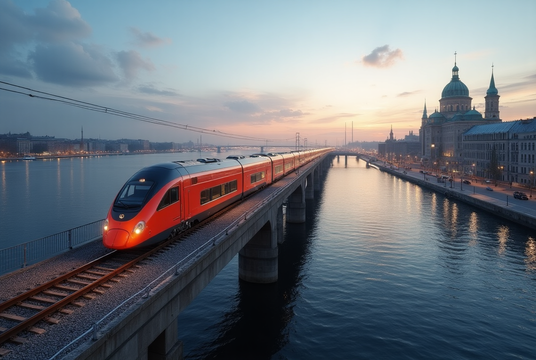Tuesday, May 13, 2025
The East Railway, as explained by Petteri Portaankorva, was anticipated to have considerable global implications for travelers. By providing a new, efficient rail route linking Finland directly to Europe’s extensive rail networks, the project was expected to significantly reduce travel times, enhance convenience, and open up new opportunities for tourism and commerce. International travelers could anticipate smoother, quicker journeys, potentially reshaping travel itineraries to and from Finland.
Travelers from Europe and beyond could expect direct high-speed access to eastern Finland, previously less accessible by rail. The improved connectivity would likely attract more visitors to lesser-known regions, diversifying tourist flows and reducing pressure on traditional travel hubs. This would provide travelers with richer experiences, enabling easy exploration of culturally unique, previously less-visited destinations.
Implications for Military Mobility and Travel Security
Given Finland’s recent NATO membership, Portaankorva emphasized the strategic importance of the East Railway for military mobility. Travelers could expect enhanced security and readiness along the route, benefiting from improved safety measures associated with military-grade infrastructure. Although primarily designed for military logistics, the heightened security standards would undoubtedly reassure international travelers regarding their safety and security while traveling through Finland and Europe.
Sustainable and High-Speed Travel Opportunities
Portaankorva highlighted sustainability and development as core themes for the East Railway. The introduction of high-speed rail—a first for Finland—would mark a significant shift toward more sustainable and efficient travel options. This advancement could make Finland more appealing to eco-conscious travelers, encouraging a modal shift from air to rail travel, significantly reducing carbon footprints.
Moreover, the speed and efficiency promised by the railway could attract travelers looking for swift and comfortable transit across significant distances. Helsinki’s connection to the broader European high-speed rail network would be a boon for both leisure and business travelers, opening Finland as a viable option for short breaks or extended business trips.
Rail Gauge Compatibility: A Travel Logistics Challenge
A crucial challenge noted by Portaankorva was Finland’s unique rail gauge, differing from the standard European gauge. Addressing this issue was essential to ensure seamless cross-border rail services. Travelers, especially those from Europe accustomed to the convenience of interconnected rail systems, would directly benefit from decisions aimed at resolving gauge compatibility. Seamless rail travel across Europe into Finland would vastly simplify logistics for international travelers, enabling uninterrupted journeys from major European cities directly into Finland.
Project Financing and Traveler Confidence
Portaankorva described how the East Railway was to be financed through combined state, municipal, and potential European Union support. The EU’s involvement was crucial, considering the project’s potential to enhance European travel connectivity. For travelers, EU backing could instill confidence in the reliability and quality of the travel infrastructure, as EU-supported projects often adhered to stringent standards in terms of safety, efficiency, and customer experience.
Timeline and Project Delivery: Planning Travel for 2040
Portaankorva provided detailed insights into the project’s timeline. Travelers planning long-term itineraries could anticipate the East Railway becoming operational by 2040. The project company would soon be established, initiating a comprehensive phase of environmental impact assessments and technical studies crucial for sustainable infrastructure development. By the late 2030s, construction was expected to be underway, signaling to the travel industry when to start preparing new travel packages, promotional strategies, and logistical arrangements.
Strategic Importance and Broader Connectivity
In his discussion at the Train & Rail conference in Stockholm, Portaankorva emphasized that the East Railway was not merely about local connectivity but strategically critical for broader European transportation. Travelers would see Finland become increasingly integrated into international travel networks, significantly influencing European and global travel trends. The project’s alignment with the TEN-T network and the Scandinavian-Mediterranean corridor promised enhanced accessibility to Finland for travelers from across Europe and the Mediterranean region.
East Railway: A Gateway from Helsinki to Europe
Portaankorva revealed that the East Railway, spanning half of Finland, would directly link Helsinki with eastern Finnish regions, further connecting to Europe’s key transport corridors. This would dramatically enhance travel options between Finland and Europe, particularly benefiting international travelers seeking efficient and reliable connections. The railway was expected to significantly reduce journey times, making travel between Helsinki and Europe more competitive with air travel.
Introduction at the Stockholm Conference: A New Travel Corridor
At the Train & Rail conference held in Stockholm, Petteri Portaankorva of East Railway Ltd introduced the ambitious East Railway project, outlining its substantial potential for revolutionizing travel connectivity between Finland and Europe. Portaankorva conveyed that this rail link would enhance mobility, security of supply, and competitiveness across the region, profoundly impacting travelers by providing efficient, reliable, and sustainable travel options.
